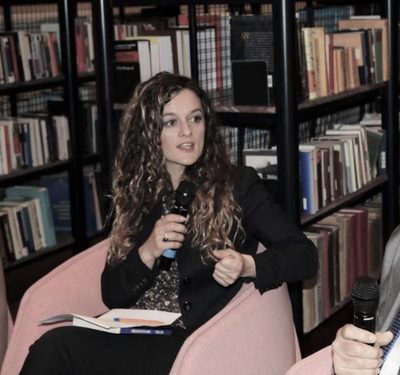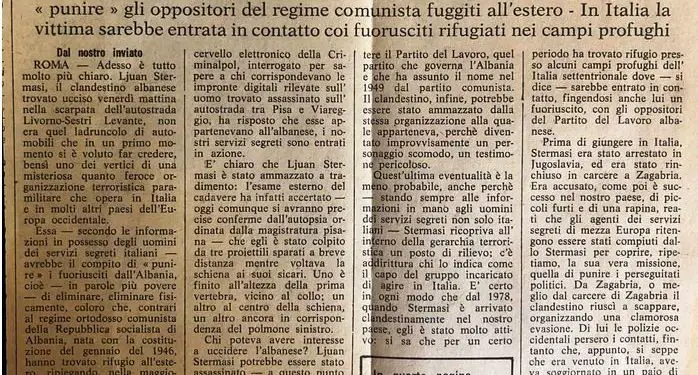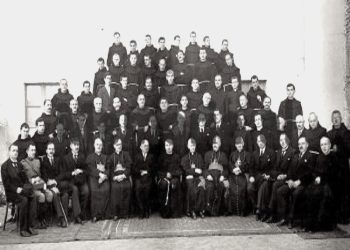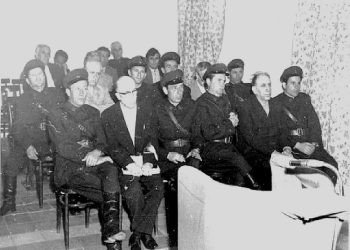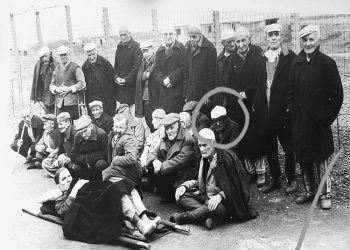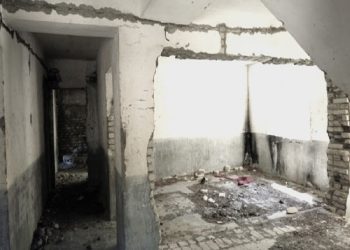By Fatmira Nikolli
The Italian press: “Luan Stërmasi, who was found dead with three pistol bullets on the highway, Livorno-Sestri Levante, an ‘Albanian 007’, and his duty, was to clear political fugitives”!
Memorie.al / Months ago, when the Files Authority held a study conference on “Albanian political emigration” during the years 1944-1990, the topic of their recruitment was already mentioned, more in response to media questions, than as the main topic of the conference. In that conference, however, it was neither included nor brought up by any researcher, the other topic of the murders of the fugitives, no matter what was said, it was clear that they were persecuted step by step. Their very lives were documented in photos and notes, as if to create an unauthorized biography, by friends who met on topics that concerned them. The mother state persecuted them after they had expelled them, but often, the framework of the persecution, has surpassed itself, even committing murders, which are not found in the official frames of the forwarded history.
In his book “Rrno pê me tregue”, Father Zef Pllumi, tells about a meeting with a special character, worth mentioning, in this bracket. Father Zefi, was executed in Saint Vasi above Saranda, as a convict, when he met Zyhdi Çitak. He is the nephew of Ramadan Citak and shares the same bunk bed in the dormitory with him. Abandoned by his family, which recognizes him as an “enemy of the people” and sick, Çitaku would confess in despair to Father Zefi, that in his youth, he had been taken to Belgrade to a spy school.
He would tell him that he used other names, and that for 25 years, he had been in Czechoslovakia, Austria, France, Belgium and Italy, with a clear task: “incited me into quarrels, confusions, insults, organized murders and assassinations, among emigrants. I had 60 officers go to the command. If you knew how much the Albanian government has spent, for these low actions, you would be left speechless, because if they had been spent here, this country would be a prosperous country”, writes Father Zef Pllumi, according to the testimony of Çitak, at the time when they had returned him to Albania and were digesting him in prisons, accusing him of 14 murders.
He speaks repentantly before a priest, in the last years of his life, perhaps he believed that with the murders committed, he would not only be received with honors, because he believed that he was doing them for the good of the country, but also that in consciousness his, repressed and deformed by the dogmas, with which they punished him, he expected that with those executions, he was undoing the evil of the motherland forever. Black and surprisingly bright! The good of the successor, in which he believed, was completely imperfect and he discovered it, after he returned to his homeland and arrived to see that he had confused the homeland with the party, which, like two lines, ran parallel, without ever meeting.
Silent, isolated and abandoned by the only person he loved with all the power of his soul, his daughter, he ‘confesses’ to Father Zef Pllum. His testimony coincides closely with the events in the West. In the 1960s and 1970s, the Albanian Security Service occasionally sent a number of agents abroad to commit murders or brought immigrants into its service to commit them. Among them, there were Kosovars, Albanians from Montenegro, but also Albanians who had fled over the years.
A sensational murder was that of Gjon Gjinaj, a former paratrooper in the mountains of Mirdita, in the 50s, who was killed by the State Security in the USA, in December 1977. At that time, the FBI lo, he arrived to discover that his killer, on the same night he committed the crime, took a flight destined for Belgrade and then, most likely, continued towards Titograd (Podgorica), from whose districts he was believed to reside. Another sensational assassination was the one against Sadik Premtes, in 1951 in Paris, to whom an agent of the State Security rushed to the ground with an ax in hand. Several murders committed in Belgium, among Albanian fugitives, according to the Belgian police, were believed to have been committed by emissaries of the Sigurimi or people who worked for it in the ranks of political emigration.
At the end of the 70s, Sigurimi made the decision to execute the representative of the Albanian Catholics in the Vatican, the Franciscan, Danjel Gjeçaj, who had escaped with the same group, with Martin Camaj. For this reason, the people of the Security, near the Albanian Embassy in Rome, had instructed an agent of theirs, illegally entered Italy, through the Italian-Yugoslav border. The person in question was called Luan Strëmasi, and it was believed that he had also committed several undiscovered mysterious murders in the ranks of the Albanian political emigration. Interpol and SISMI (Italian Military Secret Service) were on his trail and had accurate information about Stërmas’ contacts with the Albanian Embassy.
The plan to kill Dom Danjel Gjeçaj was planned to be carried out while the fugitive Albanian priest was on a visit to the Albanian community in Brussels. After the church ceremony, two people who worked for the Security would pretend to be fighting in front of the church and there in the middle of the fight, a gun would allegedly be mistakenly fired, which would hit the emissary of the Vatican to death. At the last moment, one of the people in the know, a secret collaborator of the Belgian police, warned Danjel Gjeçajn about the danger that threatened him and the latter, escorted by the Brussels police, urgently returned to the Vatican, immediately putting himself on the defensive of SISMI.
After a few days, the body of the Albanian killer was found (as described by the newspapers of the time), for which SISMI suspected that he had been eliminated by the security agents of the Albanian Embassy, feeling that his capture was only a matter of time. SISMI even suspected that the crime weapon was hidden in the Albanian Embassy. At the moment, the newspapers were unable to provide accurate news, and someone even hypothesized that right-wing Croatian emigration is also in the middle. Everything is closed in silence; this would be the last assassination attempt in the ranks of political emigration. It is believed that, with the change in the Security dome, with the shooting of Kadri Hazbi and other leaders, the infamous organization stopped the terror it had been exercising for decades abroad. The murder of the character that lived under the name of Luan Stërmasi, has been documented in two Italian newspapers, which we are bringing below.
“LA STAMPA” NEWSPAPER
“He is found dead: is he a spy, terrorist or infiltrated among Albanian refugees”? This is the title of an article on Tuesday, October 9, 1979, in the Italian newspaper “La Stampa”. Above its title, it sheds light on a murder committed in Italy. “Italian counterintelligence investigates a mysterious episode”, while the subtitle gives more details. “His name is Ljuan Stërmasi, escaped from ZAGREB – SISMI knows that he is a 007, for whom precedents have been ‘created’ as a robber. It is difficult to find out the task he had”. The event that took place in Rome is explained below in the full article of the Italian newspaper.
The character in question is an Albanian who is believed to have been an agent, for which the Italians affirm the involvement of the secret services in the neighboring country in the investigation. It is not known if Ljuan Stërmasi, who is being talked about, has this as his name, or the name used in the documents that accompanied him, however, the information of the journalists of the Romanian editorial office of “La Stampa” speak of an agent, with a certain duty, as will be understood from the following article, faithfully translated from the Italian original.
*Article*
It is the SISMI (Military Security Service) that is dealing with the murder of Luan Stërmas, the Albanian ex-convict, found dead last Friday, on a slope of the Pisa-Viareggio highway, near the Migliarino area. Who was Stermasi? The secret services justify their involvement, asserting that: “He was an interesting character; what he managed to do in Italy is not known; maybe he hadn’t started to act yet, maybe he hadn’t succeeded”?! It seems quite certain that the 37-year-old Albanian was in Italy with a specific task. According to some descriptions, he was tasked by the Yugoslav police to infiltrate groups of Albanian and Yugoslav emigrants, with the task of obtaining information about the Ustasha, far-right terrorists who recruit precisely among the refugees, a part of the forces theirs.
If this was the role of the Albanian, it is possible that he was killed by the Ustashes and in this regard, investigations are being pursued by the police and secret services. From the moment the dead body was discovered, the investigators had noticed that it was something special. The killers have taken all measures to make it difficult to identify the victim. Among other things, an effort has been made to make it seem as if the Albanian was killed in the place where he was found, but according to the police, it is possible that Stërmasi was transported by car from a place far away, dozens and dozens of kilometers away from there, although the possibility that the murder was committed in Rome is not excluded.
He was killed with three pistol shots, two of which in the shoulder. The story becomes more convoluted, if we consider that the white napkins folded in two, that Stërmasi had on his chest, could be a ‘message’ or a ‘signal’ as some claim. The presence of Stermas in Italy dates back to the beginning of ’78: this is the time when the Italian police learned that he was in Rome, and that he had the task of infiltrating among the emigrants. It is also known that he is a fugitive who was helped to escape from the prison in Zagreb, and that his criminal record (robbery, etc.) is of that type, which hints that secret agents are hiding behind them. For our police, it is clear that Stërmasi is an agent of the East.
It remains less clear if his task was to receive information on the Ustasha. But this is where one enters the mysterious world of espionage and, as it seems from Sism’s interest, in this matter, that of counter-espionage. There are many hypotheses. In Rome, however, it is insisted that Stërmasi was not a character at all: what proves the care with which his ‘role’ was prepared, starting from the escape from Zagreb.
“LA NAZIONE” NEWSPAPER (October 8, 1979)
In addition to “La Stampa”, the event involving an Albanian was also documented by another Italian newspaper. It is about “La Nazione”, where the data exceeds the first article.
*Article*
“He was the head of a terrorist network, the foreigner found murdered in Pisa”. The organization, to which the Albanian belonged, had the task of “cleansing” the opponents of the communist regime, who fled to the West. In Italy, the victim would come into contact with refugees in the camps. Now everything is much clearer. Ljuan Stërmasi, the Albanian clandestine, who was found murdered on Friday morning, on the Livorno-Sestri Levante highway, was not the car thief they wanted us to believe, but on the contrary, he is one of the leaders of a paramilitary terrorist organization, mysterious and harsh, operating in Italy and many other countries of Western Europe.
According to the information received from the Italian secret services, he would have the task of: “cleansing” the fugitives from Albania, that is, in simpler words, to physically eliminate those who were against the communist regime of the Socialist Republic of Albania, those who found refuges abroad, the runaways, who in most cases were in refugee camps.
Ljuani Stërmasi, with his guerilla mask, as he camouflaged himself or tried to camouflage himself, stealing parked cars, was known, it is said, to the security services. So, on Saturday morning, when Criminalpol’s electronic brain was asked to find out who the fingerprints of the man found murdered on the highway between Pisa and Viareggio corresponded to, it answered that they belonged to the Albanian, and then our secret services started working.
It is clear that; Ljuan Stermasi was killed and betrayed: the external examination of the corpse has actually established – today, however, there will be accurate confirmations from the autopsy ordered by the judiciary of Pisa – that he was shot by three bullets fired in one short distance, while his back was to the one who shot him. One bullet caught him at the height of the first vertebra near the neck; another, in the center of the back, while the third, affected the left lung.
Who could have been interested in killing the Albanian? Ljuan Stermasi, may have been killed – at this point – by someone who is against the communist regime, in their country and who learned about the true identity of the illegal immigrant; afraid of being eliminated, he acted first. Stërmasi, according to another hypothesis, could have fallen into the trap of a group of Albanian refugees, the same ones from abroad, trying to fight the Labor Party, the Party that governs Albania and which took its name, in 1949, from the Party Communist. And in the end, the illegal immigrant may have been killed by the same organization to which he belonged, because he suddenly became an unpleasant person, a dangerous witness.
The last hypothesis is the least possible, also because, always according to the information that the Italian Secret Services have in their hands, Stërmasi held a prominent position within the terrorist hierarchy; there are also those who point to him as the leader of the group responsible for acting in Italy. It is certain, in any case, that since 1978, when Stermasi arrived clandestinely in our country, he has been very active: it is known that for a while, he found refuge in several refugee camps in the north of Italy, where it is said that he, had also come claiming that he was also an opponent of the Labor Party of Albania.
Before arriving in Italy, Stërmasi was arrested in Yugoslavia and imprisoned in Zagreb. He was accused then, as has happened in our country, of petty theft and robbery, crimes for which the agents of the secret services of half of Europe believe that they were committed by the same Stermasi, to cover up, we repeat, his true mission, that of “cleansing” the politically persecuted.
From Zagreb, or rather from Zagreb prison, the clandestine managed to escape, organizing a sensational escape. Western police lost contact with him as long as it was known that he had come to Italy, stayed with a refugee couple and then found refuge in the capital. The news at this point becomes fragmentary; it is clear that the death of the Albanian today reopens a discussion on the political violence that has its roots in our country, and re-proposes old questions, regarding the possibility of connections between Italian terrorists, who have been particularly active in recent years, and group’s terrorist, of Eastern countries.
That is why the sources of information are silent; the few things that have become known have been made possible by a lack of discretion, words spoken and unspoken. However, that Ljuan Stërmasi was an important character is proven not only by the strange silence of the investigators, but also by the ritual his killers followed to kill him and dispose of his body. According to the latest investigations (the investigation based at the moment only on the external examination of the corpse), it seems that Ljuan Stërmasi was killed at least three or four hours before his corpse was dumped on the side of the Livorno-Sestri Levante highway, etc. ., between Pisa and Viareggio. This leads the investigators to believe that the Albanian was killed in Rome, the city where he worked, and therefore, to divert the investigation, he was brought hundreds of kilometers away.
Lack of documents delayed his identification. All this, it seems, allowed those who had committed the crime to escape, or at any rate, to buy time. But is the abandonment of the corpse just a ‘technical’ fact?! Investigators believe so, although they are not ruling out, of course, an investigation into the area. Investigations are carried out unofficially – also in Alto Adige and Veneto, where there are said to be well-trained groups of the terrorist organization. Memorie.al




